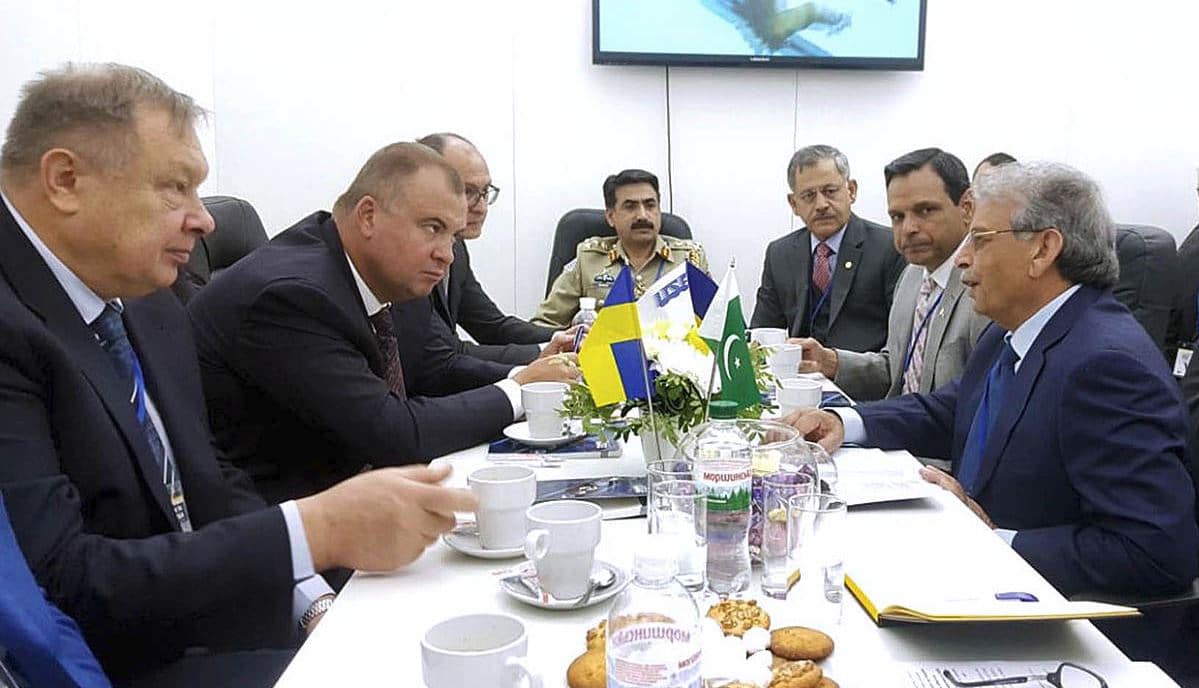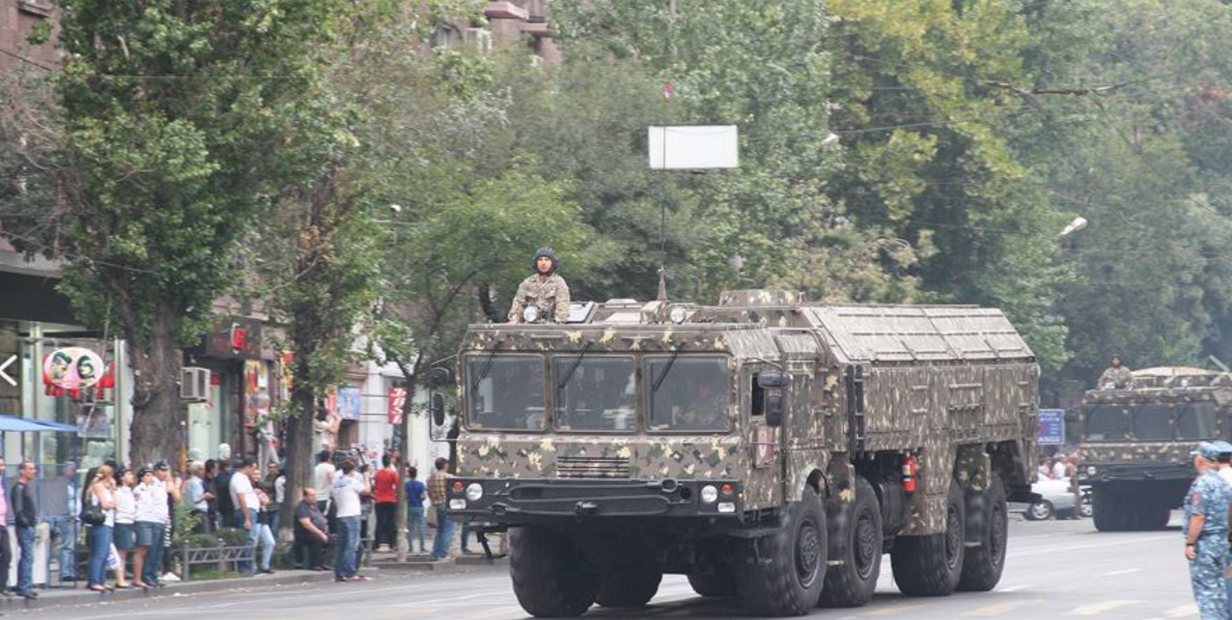2135Views 22Comments

Second JF-17B prototype now flying
Photos emerged of the second prototype of the JF-17 Thunder’s twin-seat variant – designated JF-17B – undergoing flight tests in China.
Although the Pakistan Air Force (PAF) was comfortable training JF-17 aircrews using simulators, potential third-party customers had requested a twin-seat variant for training and evaluation purposes. Production of the first JF-17B prototype began in April 2016, with the aircraft conducting its first flight a year later.
Three JF-17B prototypes are under production, two of which will join the PAF.
Notes & Comments:
In addition to a tandem seat, the JF-17B incorporates several design changes to its single-seat counterpart. These include a modified vertical stabilizer, dorsal spine (potentially for fuel to compensate for the space lost from the additional seat), enlarged nose and three-axis fly-by-wire (FBW) flight control system.
An alleged brochure from the Aviation Industry Corporation of China (AVIC) claims that the JF-17B also has a longer wingspan (by 0.5 m), potentially indicating a lower wing-loading for reduced take-off distance and increased maneuverability. The JF-17B also has a different materials proportion to the single-seat JF-17, which might indicate greater composite usage.
Given the extensiveness of structural changes (in addition to the second seat) on the JF-17B, the JF-17B’s relationship to the JF-17 Block-III will be worth observing. For example, among the JF-17 Block-III’s changes is three-axis FBW supplanting the Thunder’s existing hybrid flight control system (which has mechanical controls of bank and yaw, while electronic for pitch).
To bridge the gap between the 50th JF-17 Block-II and the JF-17 Block-III, the PAF has ordered an additional 12 JF-17 Block-II (Arabian Aerospace). Although the current PAF Chief of Air Staff (CAS) hinted at using the JF-17B for a lead-in fighter-trainer (LIFT) role, it is unclear if the PAF will order the JF-17B in numbers.
The JF-17 has replaced most of the PAF’s Chengdu F-7P units. Interestingly, the remaining F-7P/FT-7P unit is the No. 18 operational conversion unit (OCU). The PAF has the option of transitioning the No. 18 OCU to a mixed JF-17 Block-II and JF-17B fleet, enabling No. 18 to provide OCU for the No. 16, 26, 02 and 14.



22 Comments
by Hashim Rasheed
Is this just another prototype, or are there any changes / modifications that have been made in the second prototype compared to the first one?
by Bilal Khan
In all likelihood, same model with no/very minimal modifications. It does have the radar radome from the onset though, the first prototype was in airframe primer throughout the front fuselage. So JF-17B PT2 might test a radar, let’s hope it’s an AESA radar from the onset.
by mojo Bojo
I wonder if the Jf-17 differentiates itself enough as a capable low end fighter. The rumoured price of an F2/F3 standard are $25 and $30 million respectively which is not far enough from the J10b/c or even a Mig-35. However in terms of capability of range and weapons payload, it is disadvantaged drastically. I think there is a huge market for Mig-21/ F-5 type of low end capable fighters but the prices have to be attractive enough to entice Military forces away from the Russian offerings or even the Turboprops being pushed by the western countries. And if it can dominate the market, economies of scale will further reduce acquisition and life cycle costs, which would in turn make it more popular.
by Bilal Khan
Keep in mind there is also the cost of maintenance after procuring the fighter. It’s unclear to me how the Russians price the MiG-29M2 and MiG-35 when factoring these things in but it doesn’t seem to be that low. E.g. each Mi-35M (with the support costs) hit the PA for $38.25 m.
by Smoking a Tejas
Well said,The russians are known for undercutting the cost of the platform initially and then hitting the purchaser with add on cost for maintenance and spares.
by Hammad Hassan
What will be jf 17 positiom after introducing block 3 bilal?
Will it be a capable dogfighter especially in terms of indian mmrca??
by Bilal Khan
The plan is to equip the Block-III with an AESA radar, HOBS AAM and HMD/S. That combination (along with the reduced weight from 3-axis FBW) should provide for an effective close-range air-to-air fighter.
by Shershahsuri
Is the engine WS 13 or same RD 93?
by Bilal Khan
As far as the PAF is concerned, RD-93.
by Shershahsuri
Means same smoky trail and no increase in payload and endurance.
by Bilal Khan
The payload is 4,325 kg. The main question is endurance, specifically combat radius with a heavy payload. However, we also have to keep in mind that the JF-17 was designed as a general work horse to replace and improve upon the F-7P and Mirage III/5. For effective offensive capability, the PAF will bank on other platforms, F-16 today (along with the Ra’ad/H2/H4-capable ROSE) and FGF in the future.
by Jf-17 Thunder
Great… btw Bilal right an article on why don’t PAF deploy armed drones in operational areas and near afghan border especially at balochistan where FC desperately needs it…
by sami shahid
PAF should induct 4 dual seat version in each Squad.
by Nasir
Endurance in the trainer/conversation aircraft does not really matter, most sorties last no more than an hour. If it is meant for operational conversion of Pakistani or other importing nations. I think this is an excellent news.
Comment Bilal?
Best regards,
Nasir
by Aizad Sayid
The greatest change in this model seems to the full FBW capability. I wonder if the ones we already have, can be retrofitted with this? As for capability, unless we modify this aircraft for long range BVR and air to ground platform, I don’t think this aircraft can have sustained survivability in a real war. The Russian aircraft industry is still quite far ahead of the chinese. The JF-17 is not an inexpensive aircraft to fly or maintain, owing to the low tech. design of it’s engine, avionics and airframe. The acquisition of High quality BVR, laser guided bombing sensors, AESA radar, and a high quality engine will make it survivable.
by MT
Will it be able to complete with Tejas mk1 which is already integrated with HOBS, top 5 best AAM/BVR and HMD.
by TanhayeekiZubani
@disqus_GfShjhCzln:disqus , I would request you not to get into futile ‘which is the better thingy’ argument. the JF-17 is a decent jet that will do a reasonable job in helping our neighbour replace older jets. it is pointless to discuss ‘who made what’. the product is available and deployable in large numbers with the necessary features. period.
Our tejas (with all the hiccups we underwent) is also a decent effort and will be a decent CAS/point defense fighter. Some random person sitting behind a computer deriding the tejas effort without logic/evidence is just exercising his right to an opinion (uninformed, informed does not matter) and it is simply that, an opinion.
If a poster is being jingoistic and non factual, you ignore him and move on. you learn nothing by indulging in pointless arguments. I hope you take my opinion as a friendly request brother. good day.
by TanhayeekiZubani
I think the Russian pricing thought process is a relic of the cold war era when MiG-29 engines were simply replaced sometimes after 800 hours only as the scale effect provided justification for such ‘throw and replace’.
If proper spare part supply chain & MRO facilities are not factored in advance then Russian hardware is very costly on a ‘life cycle’ basis.
by Abdul Basit Iqbal
I’ve hardly seen any Indian, replying like u, in a decent manner.
by Hammad Hassan
LET ME LAUGH FIRST…..OK, POINT IS YOU CANT FIRE ANY MISSILE FROM THE GROUND….AND THE MORE REASONABLE COMPARISON IS WITH TYPHOON OR RAFALE
by Hammad Hassan
Bilal I was more interested in induction date of block 3 and the selected hmds, aesa and irst!!!
by Bilal Khan
The PAF is aiming to have the Block-3 enter production in 2019-2020. Unclear when we’ll know about the AESA radar or HMD/S. For the time being IRST doesn’t seem likely (unless you count using the ASELPOD for aerial targeting).